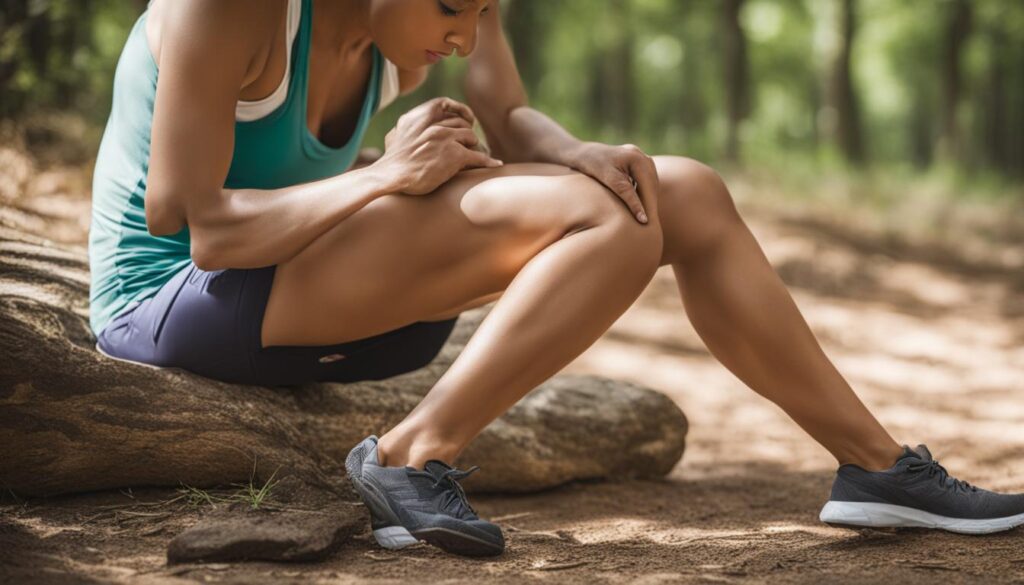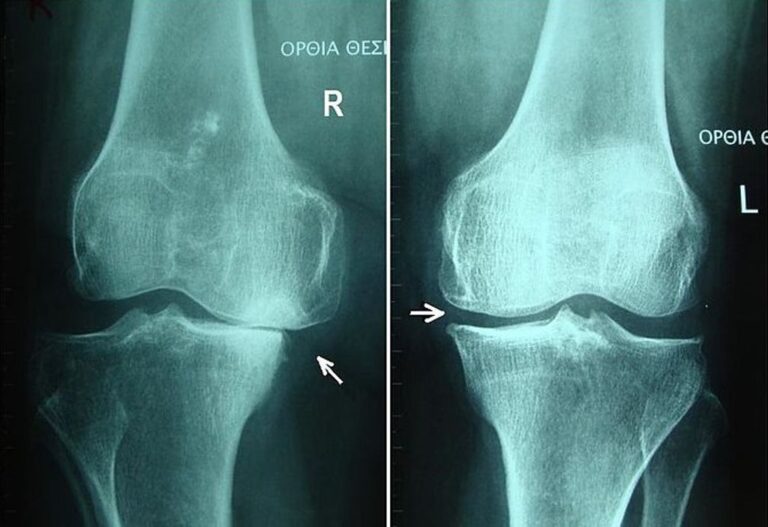Is Going Down Stairs Bad for Knees? Find Out!
Many of us have experienced knee pain when going down stairs and wondered if it is normal or something to be concerned about. The truth is, going down stairs can be tough on our knees, especially compared to walking up stairs. Understanding the impact of going down stairs on our knees can help us take measures to alleviate knee pain and protect our knee health.
When we descend stairs, the force on our knees is about 3.5 times our body weight. This puts significant stress on the knee joints and can lead to knee pain, discomfort, and potential injuries. The sliding motion of the patella (kneecap) over the femur (thigh bone) can cause damage to the cartilage that keeps the kneecap stable.
There are several potential causes of knee pain when going down stairs, including knee osteoarthritis, patellofemoral pain syndrome, muscle strain, IT band syndrome, ligament injury, and compensation injury. Identifying these underlying causes is crucial to address knee pain effectively and prevent further damage.
Key Takeaways:
- Going down stairs can put significant stress on the knees, leading to knee pain and discomfort.
- The force on the knee when descending stairs is about 3.5 times our body weight.
- Possible causes of knee pain when going down stairs include osteoarthritis, patellofemoral pain syndrome, muscle strain, IT band syndrome, ligament injury, and compensation injury.
- It is important to address these underlying causes and take measures to alleviate knee pain when going down stairs.
- Consult with a healthcare professional for a proper diagnosis and personalized treatment plan if you experience knee pain while going downstairs.
Knee Anatomy and Knee Pain
In order to understand the causes of knee pain when going down stairs, it’s important to have a clear understanding of the knee anatomy. The knee joint is a complex structure that involves four bones – the femur (thigh bone), tibia (shin bone), patella (kneecap), and fibula. It is supported by various ligaments and muscles that work together to provide stability and mobility to the knee.
When we bend our legs to walk up or down stairs, the patella slides over the femur. This movement is facilitated by the presence of articular cartilage, a smooth and slippery tissue that covers the ends of the bones, providing cushioning and reducing friction in the knee joint.
However, if the cartilage becomes damaged or worn down, the patella may slide out of position, causing pain and discomfort when descending stairs. Additionally, injuries to ligaments, muscles, and other structures within the knee can also contribute to knee pain when going down stairs.
It’s important to take care of our knee health and address any issues promptly to prevent further damage and alleviate pain. Understanding the knee anatomy and how it relates to knee pain can be the first step towards finding the right solutions for knee pain relief.
Knee Anatomy
| Bones in Knee Joint | Ligaments in Knee Joint | Muscles in Knee Joint |
|---|---|---|
| Femur | Anterior Cruciate Ligament (ACL) | Quadriceps |
| Tibia | Posterior Cruciate Ligament (PCL) | Hamstrings |
| Patella | Medial Collateral Ligament (MCL) | Gastrocnemius |
| Fibula | Lateral Collateral Ligament (LCL) | Sartorius |
Causes of Knee Pain When Going Down Stairs
Going down stairs can exacerbate knee pain due to the increased pressure on the knees. The force on the kneecap when descending stairs is 3.5 times your body weight, compared to 2.5 times when ascending stairs. This additional stress can cause knee pain and discomfort.
Common causes of knee pain when going down stairs include:
- Knee osteoarthritis
- Patellofemoral pain syndrome
- Muscle strain
- IT band syndrome
- Ligament injury
- Compensation injury
These conditions can result in damage to the cartilage, abnormal patella movement, anatomical abnormalities, flat feet, muscle weakness, and altered biomechanics.

| Condition | Symptoms |
|---|---|
| Knee osteoarthritis | Pain, stiffness, swelling, decreased range of motion |
| Patellofemoral pain syndrome | Pain behind or around the kneecap, worsens with stair climbing |
| Muscle strain | Pain and tenderness in the affected muscle |
| IT band syndrome | Pain and inflammation on the outer side of the knee |
| Ligament injury | Sharp pain, instability, swelling, and bruising |
| Compensation injury | Pain due to overuse or altered biomechanics |
It is important to address these underlying causes and take measures to alleviate knee pain when going down stairs.
Tips for Going Up and Down Stairs with Less Pain
When it comes to managing knee pain while climbing or descending stairs, there are several strategies that can help alleviate discomfort and make the process more manageable. By implementing these tips, individuals can reduce knee pain, prevent further damage, and promote knee health. Let’s take a look at some knee-friendly techniques to conquer stairs with ease.
1. Step onto the stairs with your whole foot
Instead of placing pressure on the toes alone, distribute your weight evenly by stepping onto the stairs with your whole foot. This technique reduces the strain on your knees and provides better support, minimizing the risk of knee pain.
2. Push off from your outer heel when climbing
When ascending stairs, focus on pushing off from your outer heel rather than relying solely on your toes. By activating your gluteus muscles, you can distribute the workload to your larger leg muscles, relieving pressure on the knees.
3. Avoid walking up stairs with your knee angled inward
Keep your knee in line with your foot as you ascend stairs to maintain proper alignment and prevent unnecessary stress on the joint. Walking with a knee angled inward can increase the risk of knee pain and potential injuries.
4. Address underlying causes of knee pain
To effectively manage knee pain, it’s essential to identify and address the underlying causes. Whether it’s muscle weakness, anatomical abnormalities, or prior injuries, seeking professional help and implementing targeted treatments can reduce knee pain and promote long-term knee health.
By incorporating these tips into your daily routine, you can minimize knee pain, prevent further discomfort, and make stairs less daunting. Remember to listen to your body, take breaks when necessary, and consult with a healthcare professional for personalized advice and recommendations.
How to Deal with Knee Pain
If you are experiencing knee pain, there are various treatment options available to help alleviate your discomfort and manage the condition effectively.
The R.I.C.E. Method
One commonly recommended approach is the R.I.C.E. method, which stands for Rest, Ice, Compression, and Elevation. By resting the affected knee, applying ice packs to reduce inflammation, using compression bandages to support the knee, and elevating the leg, you can help reduce pain and swelling.
Over-the-Counter Medication
Over-the-counter non-steroidal anti-inflammatory drugs (NSAIDs) can provide temporary relief from knee pain by reducing inflammation. These medications, such as ibuprofen or naproxen, can be found at most drugstores and can be effective in managing mild to moderate knee pain.
Weight Management and Exercise
Maintaining a healthy weight is crucial for managing knee pain. Excess body weight puts additional stress on the knees, exacerbating pain and discomfort. By adopting a balanced diet and engaging in regular exercise, such as low-impact activities like swimming or cycling, you can reduce the strain on your knee joints and promote overall knee health.
Physiotherapy
Physiotherapy plays a vital role in knee pain management. A trained physiotherapist can guide you through specific exercises aimed at strengthening the muscles around your knee, improving stability and mobility, and reducing pain. They may also employ techniques such as ultrasound or electrical stimulation to help alleviate your symptoms.
Support Aids and Biomechanical Devices
Support aids, such as walkers, braces, and splints, can provide additional support to your knee and help reduce pain. Biomechanical devices, like AposHealth, are innovative solutions that utilize personalized shoe-like devices to correct abnormal knee mechanics and retrain the muscles involved in knee movement, providing long-term relief for chronic knee pain.
Prescription Medication
In severe cases, when other treatment options have proven ineffective, your healthcare provider may prescribe prescription medication or corticosteroid injections to manage your knee pain. These medications can help reduce inflammation, alleviate pain, and improve mobility.
It’s important to consult with a healthcare professional to determine the most suitable treatment plan based on the severity and underlying causes of your knee pain. They will consider your specific condition and recommend the most appropriate combination of treatments to relieve your symptoms and improve your quality of life.

Consult a healthcare professional to find the best treatment for your knee pain.
5 Tips to Go Up and Down Stairs with Less Pain
When it comes to managing knee pain on stairs, a few simple adjustments can make a significant difference. Here are five tips to help you navigate stairs with less discomfort:
- Step onto the stairs with your whole foot: Instead of planting just your toes on the stairs, distribute your weight evenly across your whole foot. This can help alleviate pressure on your knees and prevent further pain.
- Push off from your outer heel when climbing: By engaging your gluteus muscles and pushing off from your outer heel, you can reduce the strain on your knees. This technique helps distribute the force evenly and promotes a more balanced ascent.
- Ensure proper alignment: Avoid walking up stairs when your knee is not aligned over your foot. This misalignment can lead to poor control and put additional stress on your knee joint. Focus on keeping your knee in line with your foot for better stability and reduced pain.
- Address underlying causes of knee pain: Identify and address any underlying causes of knee pain, such as misalignments, weaknesses, or injuries. Seeking professional help from a physiotherapist or orthopedic specialist can provide you with targeted treatment options and personalized care.
- Explore treatment options: Consider treatment options like physiotherapy or the use of biomechanical devices to relieve knee pain. These therapies can provide support, strengthen the affected muscles, and aid in the management of knee pain.
By implementing these tips, individuals can minimize knee pain and enjoy a more comfortable experience when going up and down stairs.
Conclusion
Knee pain when going down stairs is a common complaint that affects many individuals. However, by understanding the underlying causes and implementing preventive measures, it is possible to find relief and improve knee health. Managing knee pain requires addressing any underlying conditions, strengthening the muscles around the knee, and considering therapeutic options such as support aids or biomechanical devices.
Through proper knee pain management, individuals can minimize discomfort and make stairs less daunting. By reducing knee pain, everyday activities can be performed without interference, promoting a better quality of life. It is crucial to prioritize knee health, as it plays a pivotal role in maintaining mobility and overall well-being.
Engaging in knee-friendly activities and exercises can help strengthen the knee joint and surrounding muscles. It is also essential to listen to your body, avoid overexertion, and incorporate proper rest and recovery into your routine. Consulting with a healthcare professional can provide personalized advice and guidance to tailor a knee pain management plan that suits your specific needs.
Remember, knee pain relief and management is achievable. By taking proactive steps and adopting a comprehensive approach, you can effectively alleviate knee pain and enjoy a more active and pain-free lifestyle.
Conclusion
Knee pain when going down stairs can be a significant challenge for many individuals. However, there are effective strategies to address this issue and find relief. By understanding the underlying causes of knee pain and taking preventive measures, we can minimize discomfort and make stairs less daunting.
To manage knee pain when going down stairs, it is crucial to address any underlying conditions that may be contributing to the discomfort. Strengthening the muscles around the knee through targeted exercises and physiotherapy can help improve knee stability and reduce pain. Additionally, considering therapeutic options such as support aids or biomechanical devices can provide added support and alleviate knee pain.
By utilizing these strategies, we can not only find knee pain relief but also maintain knee health. This allows us to engage in everyday activities without interference. It’s important to remember that if you experience knee pain while navigating stairs, consulting with a healthcare professional is crucial for a proper diagnosis and personalized treatment plan. They can provide the guidance and support needed to effectively manage knee pain and improve overall knee health.
FAQ
Is going down stairs bad for knees?
Going down stairs can put a lot of stress on the knees, which can lead to knee pain and discomfort. The force on the knee when descending stairs is 3.5 times your body weight, compared to 2.5 times when ascending stairs.
What causes knee pain when going down stairs?
Knee pain when going down stairs can be caused by various factors such as knee osteoarthritis, patellofemoral pain syndrome, muscle strain, IT band syndrome, ligament injury, and compensation injury. These conditions can result in damage to the cartilage, abnormal patella movement, anatomical abnormalities, flat feet, muscle weakness, and altered biomechanics.
How can I reduce knee pain when climbing or descending stairs?
To reduce knee pain on stairs, try stepping onto the stairs with your whole foot, pushing off from your outer heel when climbing, and avoiding walking up stairs with your knee angled inward. It is also important to address any underlying causes of knee pain and seek professional help if necessary.
What are some treatment options for knee pain?
Treatment options for knee pain include the R.I.C.E. method (Rest, Ice, Compression, Elevation), over-the-counter non-steroidal anti-inflammatory drugs (NSAIDs), weight management, exercise, physiotherapy, support aids such as walkers and braces, biomechanical devices like AposHealth, and in severe cases, prescription medication or corticosteroid injections.
Are there any tips to go up and down stairs with less knee pain?
Yes, here are five tips to help reduce knee pain when going up and down stairs: step onto the stairs with your whole foot, push off from your outer heel when climbing, avoid walking up stairs with your knee angled inward, address underlying causes of knee pain, and seek professional help and treatment options.







